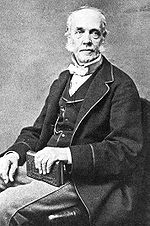ട്രിറ്റോൺ
 വോയേജർ 2 എടുത്ത ട്രിറ്റോണിന്റെ ചിത്രം | |
| കണ്ടെത്തൽ | |
|---|---|
| കണ്ടെത്തിയത് | William Lassell |
| കണ്ടെത്തിയ തിയതി | October 10, 1846 |
| വിശേഷണങ്ങൾ | |
| ഉച്ചാരണം | ഇംഗ്ലീഷ് ഉച്ചാരണം: /ˈtraɪtən/ [a] |
| Neptune I | |
| Adjectives | Tritonian |
| ഭ്രമണപഥത്തിന്റെ സവിശേഷതകൾ | |
| 354 759 km | |
| എക്സൻട്രിസിറ്റി | 0.000 016[1] |
| −5.877 d (retrograde) | |
| ചെരിവ് | 129.812° (to the ecliptic) 156.885° (to Neptune's equator)[2][3] 129.608° (to Neptune's orbit) |
| ഉപഗ്രഹങ്ങൾ | Neptune |
| ഭൗതിക സവിശേഷതകൾ | |
ശരാശരി ആരം | 1353.4 ± 0.9 km[4] (0.2122 Earths) |
| 23 018 000 km2[b] | |
| വ്യാപ്തം | 10 384 000 000 km3[c] |
| പിണ്ഡം | 2.14×1022 kg (0.003 59 Earths)[d] |
ശരാശരി സാന്ദ്രത | 2.061 g/cm3[4] |
| 0.779 m/s2[e] | |
| 1.455 km/s[f] | |
| synchronous | |
Sidereal rotation period | 5 d, 21 h, 2 min, 53s[5] |
| 0 | |
| അൽബിഡോ | 0.76[4] |
| താപനില | 38 K[5] |
| 13.47[6] | |
| −1.2[7] | |
| അന്തരീക്ഷം | |
പ്രതലത്തിലെ മർദ്ദം | 1.4–1.9 Pa[5] (1/70 000 the surface pressure on Earth)[9] |
| ഘടന (വ്യാപ്തമനുസരിച്ച്) | nitrogen; methane traces.[8] |
ട്രിറ്റോൺ നെപ്ട്യൂണിന്റെ ഏറ്റവും വലിയ ഉപഗ്രഹമാണ്. 1846 ഒക്ടോബർ 10ന് ഇംഗ്ലീഷ് ജ്യോതിശാസ്ത്രജ്ഞനായ വില്യം ലാസ്സൽ ആണ് ട്രിറ്റോണിനെ കണ്ടുപിടിച്ചത്. മാതൃഗ്രഹം ഭ്രമണം ചെയ്യുന്നതിന്റെ എതിർദിശയിലാണ് ഇതിന്റെ ഭ്രമണം. ഇത്തരത്തിലുള്ള സൗരയൂഥത്തിലെ ഏറ്റവും വലിയ ഉപഗ്രഹമാണ് ട്രിറ്റോൺ. 2,700 കി.മീറ്റർ വ്യാസമുള്ള ഇത് സൗരയൂഥത്തിലെ വലിയ ഉപഗ്രഹങ്ങളിൽ ഏഴാമത്തേതാണ്. ട്രിറ്റോണിന്റെ ഉപരിതലത്തിൽ പ്രധാനമായും ഉള്ളത് ഖനീഭവിച്ച നൈട്രജനും ജലവുമാണ്. തണുത്തുറഞ്ഞ മാന്റിലും പാറകളും ലോഹങ്ങളുമുള്ള കോറും ആണ് ഇതിനുള്ളത്.[5] ഇതിന്റെ മൂന്നിലൊന്നു ദ്രവ്യവും കോറിലാണ് അടങ്ങിയിട്ടുള്ളത്. 2.061g/cm3 ആണ് ഇതിന്റെ സാന്ദ്രത.[4] ഇതിൽ തന്നെ 15-35% ജലഹിമം ആണുള്ളത്.[5]
ഭൂമിശാസ്ത്രപരമായ പ്രവർത്തനങ്ങൾ നടക്കുന്ന സൗരയൂഥത്തിലെ ചുരുക്കം ചില ഉപഗ്രഹങ്ങളിൽ ഒന്നാണ് ട്രിറ്റോൺ.
കണ്ടെത്തലും പേരിടലും[തിരുത്തുക]

1846 ഒക്ടോബർ 10ന് ബ്രിട്ടീഷ ജ്യോതിശാസ്ത്രജ്ഞനായ വില്യം ലാസ്സൽ ആണ് ട്രിറ്റോണിനെ കണ്ടെത്തിയത്.[10] നെപ്ട്യൂണിനെ കണ്ടെത്തി പതിനേഴാമത്തെ ദിവസമാണ് ട്രിറ്റോണിനെ കണ്ടെത്തിയത്. നെപ്ട്യൂണിനെ കണ്ടെത്തി എന്ന വാർത്ത കേട്ടപ്പോൾ തന്നെ ജോൺ ഹെർഷൽ അതിന്റെ ഉപഗ്രഹത്തെ കണ്ടെത്താൻ ലാസ്സലിനോട് നിർദ്ദേശിച്ചിരുന്നുവത്രെ. ഹെർഷലിന്റെ കത്തു കിട്ടി എട്ടാമത്തെ ദിവസം തന്നെ അദ്ദേഹം അതു കണ്ടെത്തുകയും ചെയ്തു.[11] ഗ്രീക്ക് ഇതിഹാസത്തിലെ സമുദ്രദേവനായ ട്രിറ്റോണിന്റെ പേര് ഇതിന് നൽകി.
അവലംബം[തിരുത്തുക]
- ↑ David R. Williams (23 November 2006). "Neptunian Satellite Fact Sheet". NASA. Archived from the original on 2008-02-01. Retrieved 2008-01-18.
- ↑ Jacobson, R. A. — AJ (2009 April 3). "Planetary Satellite Mean Orbital Parameters". JPL satellite ephemeris. JPL (Solar System Dynamics). Archived from the original on 2011-08-10. Retrieved 2011-10-26.
{{cite web}}: Check date values in:|date=(help). - ↑
doi: 10.1088/0004-6256/137/5/4322
This citation will be automatically completed in the next few minutes. You can jump the queue or expand by hand - ↑ 4.0 4.1 4.2 4.3 "Planetary Satellite Physical Parameters". JPL (Solar System Dynamics). Archived from the original on 2011-10-14. Retrieved 2011-10-26.
- ↑ 5.0 5.1 5.2 5.3 5.4
McKinnon, William B.; Kirk, Randolph L. (2007). "Triton". In Lucy Ann Adams McFadden, Lucy-Ann Adams, Paul Robert Weissman, Torrence V. Johnson (ed.). Encyclopedia of the Solar System (2nd ed.). Amsterdam; Boston: Academic Press. pp. 483–502. ISBN 978-0-12-088589-3.
{{cite encyclopedia}}: CS1 maint: multiple names: editors list (link) - ↑ "Classic Satellites of the Solar System". Observatorio ARVAL. Archived from the original on 2007-09-28. Retrieved 2007-09-28.
- ↑ Fischer, Daniel (12.2.2006). "Kuiperoids & Scattered Objects". Argelander-Institut für Astronomie. Archived from the original on 2008-06-14. Retrieved 2008-07-01.
{{cite web}}: Check date values in:|date=(help) - ↑
A L Broadfoot; S K Bertaux; J E Dessler; et al. (December 15, 1989). "Ultraviolet Spectrometer Observations of Neptune and Triton". Science. 246 (4936): 1459–1466. Bibcode:1989Sci...246.1459B. doi:10.1126/science.246.4936.1459. PMID 17756000.
{{cite journal}}: Unknown parameter|author-separator=ignored (help) - ↑ "Neptune: Moons: Triton". NASA. Archived from the original on 2007-10-29. Retrieved 2007-09-21.
- ↑ William Lassell (November 12, 1847). "Lassell's Satellite of Neptune". Monthly Notices of the Royal Astronomical Society. 8 (1): 8. Bibcode:1847MNRAS...8....9B.
- ↑
William Lassell (November 13, 1846). "Discovery of Supposed Ring and Satellite of Neptune". Monthly Notices of the Royal Astronomical Society. 7 (9): 157. Bibcode:1846MNRAS...7..157L.
William Lassell (December 11, 1846). "Physical observations on Neptune". Monthly Notices of the Royal Astronomical Society. 7 (10): 167–168. Bibcode:1847MNRAS...7..297L.
Lassell, W. (1847). "Observations of Neptune and his satellite". Monthly Notices of the Royal Astronomical Society. 7 (17): 307–308. Bibcode:1847MNRAS...7..307L. doi:10.1002/asna.18530360703.
<references> ആവശ്യത്തിനായി "JPL-SSD-Neptune" എന്ന പേരിൽ നിർവചിക്കപ്പെട്ട <ref> റ്റാഗിന് ഉള്ളടക്കമൊന്നുമില്ല.കുറിപ്പുകൾ[തിരുത്തുക]
ഉദ്ധരിച്ചതിൽ പിഴവ്: <ref> റ്റാഗുകൾ "lower-alpha" സംഘത്തിൽ ഉണ്ട്, പക്ഷേ ബന്ധപ്പെട്ട <references group="lower-alpha"/> റ്റാഗ് കണ്ടെത്താനായില്ല
